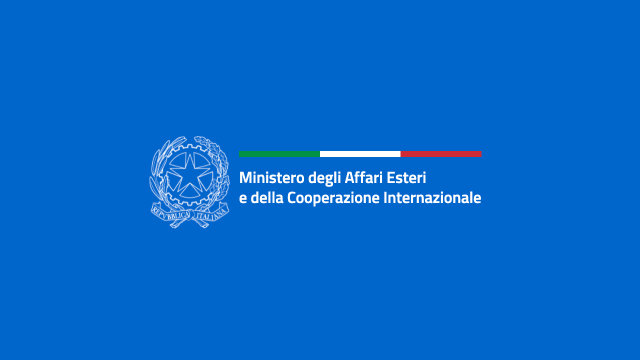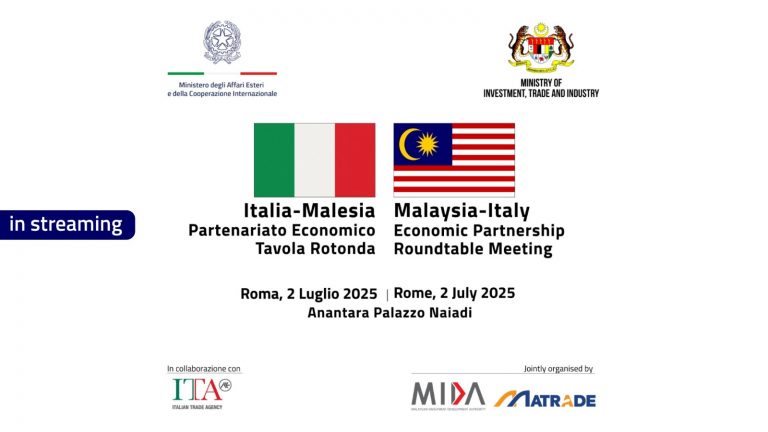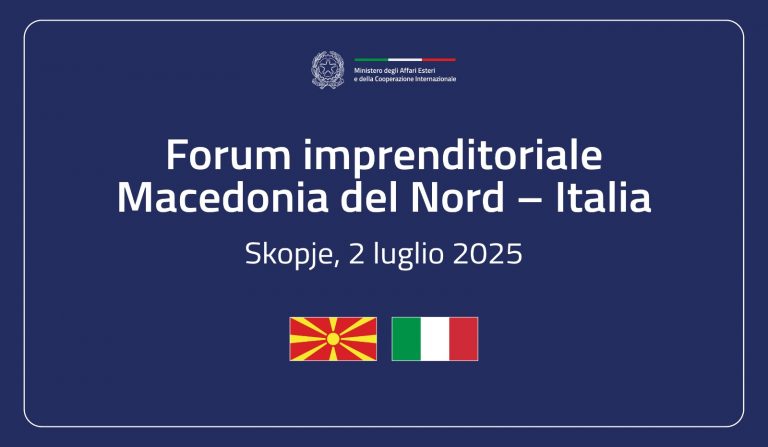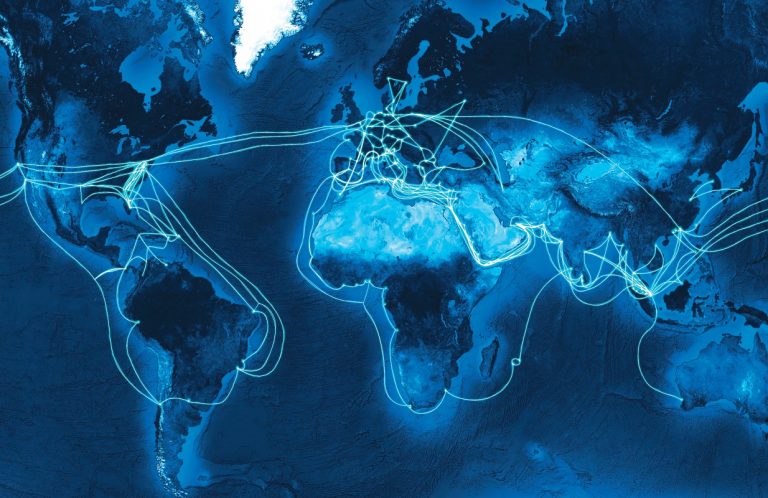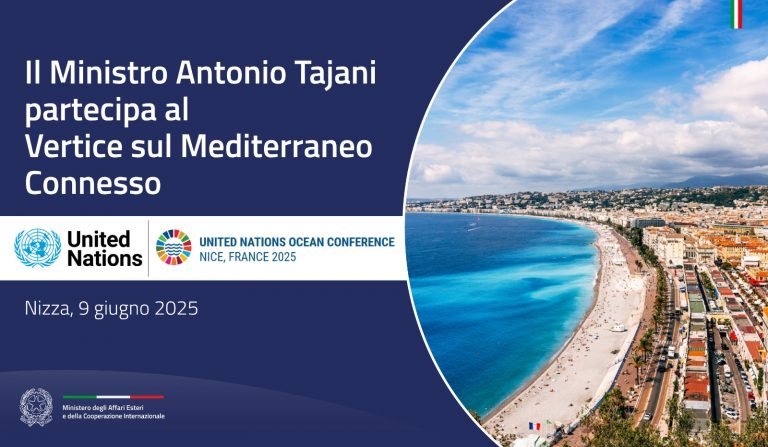Vincenzo De Luca is the new Director-General of the Ministry’s Directorate that promotes Brand Italy around the world. In this interview, he expresses his opinions. He is confident despite the problem of resources…
The Directorate General that you preside over has recently started promoting Brand Italy around the world both in the economic sector and in the areas of language and culture, science and technology. What actions have you promoted and what are the tangible instruments provided by the Ministry’s Directorate to those who work in these sectors in foreign countries? Who are the beneficiaries of the support you offer?
In addition to the diplomatic and consular network of 125 Embassies and 79 Consulates in five continents, the Ministry of Foreign Affairs and International Cooperation also manages 83 Italian Cultural Institutes (IICs) in 59 Countries. It not only interlinks administrative offices but it is a full-fledged “intelligent network” of carefully selected and highly trained officials serving Italy abroad. They constitute an extraordinary value added. The network is a strategic instrument that the Ministry makes available to the interests that Italy holds throughout the world, to its citizens, businessmen, artists and companies. Of course, these are political and security interests. But they are also economic, commercial, cultural and scientific interests. Allow me to say that we uphold the interests concerning almost all the aspects of the life of every single Italian citizen.
Starting from companies, for example. Yes; thanks to the Ministry’s network, the Directorate General for Cultural and Economic Promotion and Innovation gives institutional support to companies: it facilitates contacts with local State and public Institutions, it provides support in participating in tendering procedures, it provides assistance in dispute resolution. In addition, the relations of Italian diplomats with local political and economic decision-makers, make it possible to acquire targeted and reliable information, both in terms of market orientations and of market intelligence on business opportunities, investment plans, public procurement, etc.
For years this Directorate General has given Italian businessmen and companies access to two useful online platforms: “InfoMercatiesteri”, for background information, and “ExTender”, for international tenders. In addition to this, we circulate the “Economic Diplomacy” newsletter. This Ministry coordinates politician-led missions to foreign Countries consisting of sector-specific companies and associations. It also organizes economic events at the Farnesina, such as business forums and country presentations, in order to facilitate contacts and the exchange of information between the economic agencies of Italy and of countries around the world. Instead, what actions do you put in place to promote the Italian culture and language? Why are these considered strategic activities?
Because if certain Countries are considered to be strategic partners, we want part of their ruling classes to speak Italian and be pro-Italy in the future. Culture and language are crucial in this perspective. It is essential for the network of our Italian Cultural Institutes (IIC) to promote them in partnership with theatres, music conservatories, opera theatres, symphonic orchestras, dance companies, festival organizers, book fairs and universities, including all the Departments of Italian Studies, Architecture and Art History. Their scope of action also covers the organizations promoting Italy in the field of publishing, the cinema, the arts and science. The IICs work to unite Italian researchers who work on site, by encouraging them to meet and establish associations with a view to exchanging experiences. They also cooperate with local associations of Italian teachers who are essential in the promotion of our language abroad.
You also monitor the internationalization of Regions and other local Autonomies: I am interested to know your opinion on the South of Italy which, although it is potentially highly “exportable”, continues to be in serious economic need and isolated. What projects do you have in place with and for the Regions of the South?
The first thing that comes to my mind is the Signa Maris project involving the Foreign Ministry, its diplomatic and consular network and the Ministry of Cultural Heritage and Activities and Tourism (MiBACT). The project, which was launched in 2015, promotes tourism itineraries connected with sports boating activities in Calabria, Campania, Puglia and Sicily. The project is financed with the EU funds of the Interregional Operational Programme 2007-2013 and aims to maximise the potential of these Regions in the sector, in cooperation with Assocamerestero. Moreover, even if it is not exclusively addressed to the local authorities of the Mezzogiorno, I would nonetheless like to point out the upcoming Roadshow to tour Italy’s metropolitan cities, which is primarily aimed at informing local authorities of the existing instruments to facilitate their internationalization process.
When talking about internationalization, it is impossible not to mention the Internet. Italian companies, but especially museums and cultural institutions (especially small ones) are not very computer-smart. Does your department provide support also in this sense?
Our integrated promotion activities cannot do without the Internet. This is true for the Ministry and for its network abroad. Let me give you an example of how we work at the Farnesina and within Italy’s diplomatic and consular network. The Italian Embassy in Moscow has developed the “La Tua Italia” portal. The site is self-financed through private sponsors and ads by businesses, hotels and tour operators and it keeps users updated on the tourism opportunities in Italy with over 400 articles in Italian and Russian. It also offers online visa services to Russian tourists, enabling them to fill out visa applications, set an appointment with our consular offices in Russia and pay consular fees. Lastly, users can reserve apps and “discount cards” made available by Italian Regions and Cities and giving discounts on museum admissions.
From your privileged point of observation what is the image of Italy like in the world? Especially in terms of its political stability and credibility but also of its international economic and cultural ranking.
Based on my experience abroad and in Italy, I am led to fully agree with the words of wisdom and pride spoken by the President of the Republic, Sergio Mattarella, at the celebration of this year’s Republic Day: “Italy is much better than how we Italians often portray it to be”. And I would like to add a word of my own: at international level, we are evaluated on the basis of facts, of results. Impressions and clichés are short-lived. It is our contribution at bilateral and multilateral level to the noblest causes of the International Community that mirrors our economic solidity and has a positive fallout on Italy’s credibility, the respect for our chanceries and on the imagination of the citizens of foreign Countries.
This is why the image of Italy in the world is improving. Because we are serious, loyal and reliable while remaining ingenious and creative.
Do you think there is still the myth of the Italian lifestyle? Of course. But in addition to the traditional appeal of the Italian lifestyle, which is now even more on demand, there is a growing interest in Italy as an innovative, creative force. Italian companies and products of excellence are sought after in a growing number of sectors but also in traditional sectors there is increasing interest for Italian companies’ innovative working instruments and methods. There is now a tight link between innovation and tradition, elements that characterize Made in Italy products and their recognisability abroad. It is now our duty to build on this new positive trend in order to reinforce our credibility. Because credibility is hard currency on the international scene.
By the way, what is this Government doing to strengthen Brand Italy abroad? Are the funds and strategies envisaged in the latest Budget Bills sufficient? Are they only façade operations or are they tangible measures?
Strengthening Brand Italy abroad is a priority for this government. Proof of this is the assertive policies passed in the last few years. I am thinking of the creation of the Situation Room for the Internationalisation of Italy managed by the Ministry of Foreign Affairs and International Cooperation and by the Ministry of Economic Development. I am thinking of the resources allocated by the Cabinet with the extraordinary Made in Italy Promotion Plan: more than 261 million euros for the 2015-2017 three-year period to support the strengthening of Brand Italy on foreign markets through key actions. These include the creation of a single logo for agricultural and agro-food products that are representative of Italy’s high-quality food and wine heritage, communication campaigns to combat the misleading trade practice of Italian-sounding products; boosting the international promotion of Italian trade fairs, organizing roadshows to attract foreign investments in Italy, setting up instruments to improve the internationalization of SMEs, which are the backbone of Italy’s economic system.
Let’s talk about contemporary art. The Farnesina Collection is a jewel that is becoming progressively larger. It contains many very valuable works of art and efforts have recently been made to reach out to new generations of artists. How are you planning to increase or relaunch it? Whose task is it?
Thanks to the Scientific Committee established in 2013 [Editor’s note: made up by Gabriella Belli, Director of the Civic Museums of Venice; Fabio de Chirico, Director of Service I – Contemporary Art and Architecture of the MiBACT; Luigi Ficacci, Superintendent of the Provinces of Lucca and Massa Carrara; Gianfranco Maraniello, Director of the MART in Rovereto; Anna Mattirolo, art historian, MiBACT; Angela Tecce, Director of the Museum District of Calabria], during the last three years we completed redesigned the Farnesina Collection. We acquired new artworks on loan by the great Italian masters of the second half of the 20th Century (Burri, Accardi, Sanfilippo, Vedova, Turcato) and by more contemporary artists (Zorio, Piacentino, Mochetti, Salvadori). We organized new exhibition rooms (on the 1st Floor, the 2nd Floor, dedicated to the 1980s and 1990s; the 4th Floor, dedicated to the new generations). We have introduced and upgraded museum management standards (with new ad hoc lighting and new labels). We also organized numerous travelling exhibitions abroad: in Mexico (2013), Sweden, Germany, Macedonia (2014), the Balkans (2015). And we have more in the pipeline for 2016-2017. In addition to internationally circulated projects, there is a study under way on new spaces to host exhibitions at the Farnesina and to set up new exhibition rooms on the 3rd and 5th Floors.
What are your plans for the future? Over the next three-year period we want to expand the Collection with new free loans. And we want to use it as an instrument to organize conferences, meetings with artists and debates. We believe that the Farnesina Collection is like a living organism, capable of raising questions and reflections on topical issues and of inducing people to talk about Italy and its extraordinary production of contemporary art. Moreover, many of the facilities of the IICs abroad, as those in London and Paris, have guest quarters and have therefore implemented resident artist projects to host artists over a period of time, at the end of which they can present the work done there. During their stay, the IIC helps the artists to make connections with the local world of culture and to promote their creations.
A big shortcoming of this collection is the lack of funds for new acquisitions. Up to now the artwork has all been on temporary free loan. Instead it would be important to create a new permanent nucleus of artwork in order to tangibly support art galleries and artists. Would this be a viable option?
The Farnesina Collection was set up in 2001 as an instrument through which to promote Italy’s contemporary art research. It is undoubtedly configured as a geometrically varying organism grown out of the free loan system, which has ever since regulated the turnover of artworks, which are now more than 450. The free loan system gives flexibility to the Collection and mirrors the vibrant relationships between the Farnesina and the artists and their heirs, and also the collaboration with prestigious museums, art galleries and foundations, which are proof of the strong trust placed in the actions of our Ministry. Today, in an economic cycle requiring balanced budgets, the free loan system is essential to enable the Ministry to promote Italy’s contemporary art by using available financial resources in a carefully targeted way.
Ministries often don’t communicate sufficiently between them. And this is a drawback. Do you, for example, have relations, projects, protocols of understanding with ministries dealing with culture?
Together with MiBACT, MIUR, RAI and the Dante Alighieri Society, we are working on a protocol to regulate the integrated promotion of tourism abroad. The aim is to more closely coordinate our actions in view of the launch of the Strategic Plan for Tourism, which intends to guide tour operators’ choices towards innovation and digital technologies and towards delivering business value to Italy’s territory and heritage. The ultimate aim is to vitalize Brand Italy throughout the world in all its facets: economic, cultural, scientific, language, etc.
The Farnesina will also play a relevant role in surveying the most interesting foreign tourism markets to be targeted and in performing promotional activities in sync with ENIT’s new offices. Moreover, the MiBACT is competent over matters that clearly have an international scope. I am thinking of grants for young artists, of cooperative efforts between museums and how to finance them. This is why during the last few years the Farnesina has intensified its cooperation with MiBACT with a view to launching an integrated promotion of Italian culture around the world.
In 2014 there was big controversy around the Government’s decision to close down some IICs that were considered to be unproductive. Italian intellectuals mobilized although some – including Artribune – supported the decision. It is indeed true that some Institutes are well managed and perform adequately while others lag behind, promote unfit events and activities that come short of having an international profile, and can be considered outright “decoys” to lure sponsors. What is the situation like today? How are the Institutes performing? Are they sufficiently funded?
As I mentioned before, the need to balance out public budgets has imposed painful sacrifices. Part of these sacrifices have been shouldered by the IICs, seeing the drastic cuts they suffered in their financial and human resources. As soon as the economy recovers, these resources should be replenished in order to enable the IICs to reinforce their role as Italy’s “cultural hub” around the world.
Are IIC directors, who are selected not through a public competition but by direct appointment, always capable of giving an excellent performance in terms of contents but also of fundraising? Or is there a problem precisely with the appointments?
The directors of reputed competence – at present 7 – are performing extremely well. Their results are the best possible proof of the effectiveness of the selection system based on a public notice introduced by the Farnesina to assure transparency to the appointment process. The level of cultural promotion remains very high, both in terms of quality and of quantity. And this is so despite the fact that the directors often have to single-handedly manage a very complex machine that is increasingly prompted to open up to all the sectors of creative industry and to coordinate with other promoters of Brand Italy. Allow me to say that our directors and senior officials are real miracle-workers.

